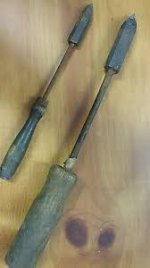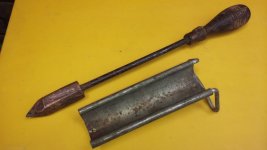I'll ask my classmate I'll ask my classmate
I'd really kinda like to know...
~~~~~~~~~~~~~~~~~~~~~~~~~~~~~~~~
Then again, here's what things apparently looked like:
...a part of the load of each canoe consisted of the leaden canestirs of powder which
were not in least injured, tho' some of them had remained upwards of an hour under water.
about 20 lbs. of powder which we had in a tight Keg or at l[e]ast one which we thought
sufficiently so got wet and intirely spoiled. this would have been the case with the other had it
not have been for the expedient which I had fallen on of securing the powder by means of the
lead having the latter formed into canesters which were filled with the necessary proportion of
poder to discharge the lead when used, and
those canesters well secured with corks and wax.
...but Lewis's lead canisters, stoppered with corks and sealed with wax, were
watertight, and dry air meant nothing to them. The lead canister walls, although fairly soft for
metal and easily “brused,” were resistant to splitting open in accidents.
http://www.westernexplorers.us/Powder_Canisters_of_Lewis_and_Clark.pdf
Mystery solved.....
('Sorry if this was brought out/obvious by earlier posters and
I missed it. Mea culpa, Mea culpa.... Mea maxima culpa)

.


